The best way to clean dental implants is to start a strict dental sanitation routine. The best way to clean single implant and overdenture implants having plaque and germs around the gum line is by brushing no less than twice a day using gentle toothpaste and a toothbrush with soft bristles. Cleaning spaces between teeth and surrounding implants that a toothbrush does not reach is often accomplished by using dental floss or interdental brushes. Using an antibiotic mouthwash helps to further reduce oral bacteria and maintain healthy gums.
Dental implants are prosthetic teeth or other dental prostheses that are surgically inserted into the jawbone to serve as artificial tooth roots made of biocompatible materials, such as titanium. The implants provide a solid basis for an array of dental restorations, such as single crowns, bridges, and overdentures. The durability and functionality of dental implants depend heavily on proper care and maintenance.
Taking care of dental implants is necessary and demands timely dental evaluations. Dental hygienists or dentists evaluate gum health, conduct an intensive assessment of the implant site, and eliminate any calculus (tartar) or deep plaque formation that is not eliminated by brushing and flossing alone. Consistent check-ups are vital for keeping the best dental health and identifying early indications of prosthetic concerns.
Delivering utmost attention on how to clean dental implants properly is necessary when dealing with overdenture implants, which usually entails securing a removable denture to several implants for increased stability. Daily removal of the denture for cleaning is recommended to avoid plaque formation on the prosthetic attachments and the denture itself. Scrub the denture gently with a denture brush, mild soap, or denture cleanser to get rid of germs and residue from food. The implant attachments have to be cleaned with an interdental brush or a specialised implant brush to keep them in excellent condition.
Any special cleaning guidelines provided by the dentist or prosthodontist must be followed while using overdenture implants. A denture cleaning solution needs to be soaked in the denture overnight, according to certain recommendations, to guarantee complete disinfection. Frequent check-ups are essential for assessing how to care for dental implants fit and the state of the implant attachments because stability and comfort require changes over time.
Dental substitutes necessitate careful oral hygiene routines, routine professional cleanings, and adherence to every specific cleansing instruction provided by dental specialists. It applies to single and overdenture implants. Clients guarantee the enduring functionality of their dental prosthesis and gain pleasure in confident grins for years to come by emphasising oral health and adhering to the recommendations.
How Do I Take Care of Single Implants?
The guidelines for you to take care of Single Implants are listed below.
- Use a soft-bristled toothbrush to clean at least twice daily: Use a soft-bristle toothbrush to clean the teeth. Brushing must include the surrounding area of the implant, at least twice a day. Gently brush the teeth to avoid damaging the implant or causing gum irritation.
- Use gentle toothpaste: Use a gentle toothpaste that is delicate and non-abrasive. Avoid toothpaste containing baking soda or stain-removing ingredients, as they are too abrasive for the implant and surrounding tissues.
- Brush the area surrounding and beneath the implant's crown: Take extra care when brushing the area surrounding and beneath the implant's crown. Plaque accumulation causes gingival inflammation and implant-related complications in these areas. Utilise delicate, small circular motions to be spotless.
- Use a nylon-coated interdental brush for hard-to-reach areas: Use an interdental brush with a nylon coating to clean hard-to-reach areas between the implant and adjacent teeth. The brushes remove debris and plaque from confined spaces.
- Use implant-specific floss or unwaxed tape to floss every day: Use floss designed for implants or unwaxed tape to detangle daily around the implant. Gently slide the floss between the implant and adjacent teeth, cleaning both sides of the implant. It is important not to break the floss with excessive force, as it causes implant site trauma.
- Use a mouthwash: Make use of an oral irrigator as directed, preferably a water flosser, as directed by the dentist. It employs a stream of water to remove food particles and plaque around the implant. Consider talking to a dental practitioner before getting an oral irrigator, as it is not appropriate for everyone.
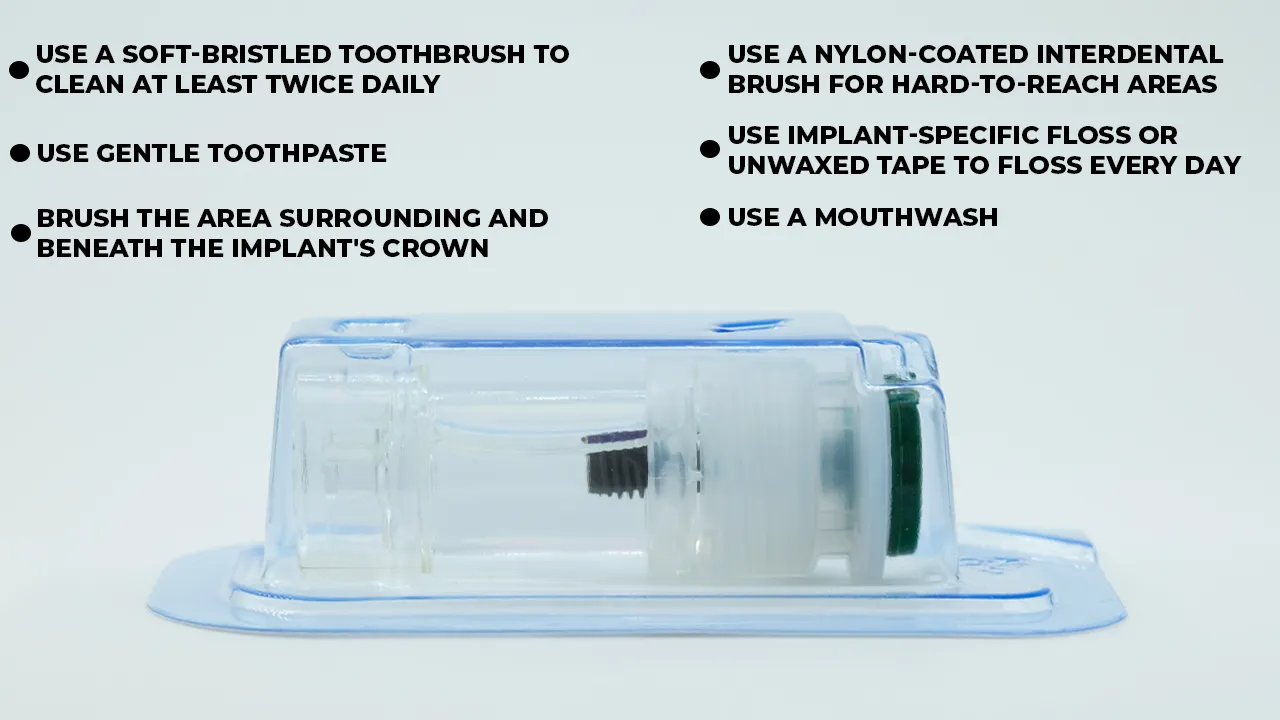
1. Use a soft-bristle toothbrush to clean at least twice daily.
Using a soft-bristled toothbrush to clean at least twice daily assists in keeping proper dental hygiene, particularly the maintenance of single implants. There are essential processes to take care of single implants using soft-bristle toothbrushes. The initial step is to select the best toothpaste for implants with mild and flexible bristles. Moisten the toothbrush bristles before applying toothpaste. Apply a pea-sized volume of toothpaste to the toothbrush bristles. Hold the toothbrush against the teeth and gums at a 45-degree angle. Two minutes of brushing is required for complete cleaning. Thoroughly cleanse the toothbrush with water to eliminate excess toothpaste and debris after brushing.
There are obstacles encountered when using a soft-bristle toothbrush, which include pressure and technique. A single implant needs to be polished with care while being mindful of the pressure applied. Excessive force irritates the gums, recession, and potential implant or surrounding tissue injury. It is essential to brush delicately to avoid these complications. Use a proper technique for effective cleansing. Plaque and detritus are missed when cleansing around the implant If the proper technique is not employed. It is recommended to consult with a dentist or dental hygienist about the appropriate brushing technique to ensure proper cleaning.
Using a soft-bristled toothbrush has several benefits. The benefits of a soft-bristled toothbrush include gentle gums, plaque removal, and maintaining oral health. Soft bristles are gentle on the gums and less likely to irritate or harm the implant site. They effectively clean the implant without damaging the delicate soft tissues surrounding it. Brushing with a soft-bristled toothbrush aids in the elimination of plaque, a bacterial film that accumulates on teeth and implants.
Regular plaque removal is essential for reducing the risk of periodontal disease and implant-related complications and preserving the health and longevity of dental implants. Appropriate brushing with a soft-bristled toothbrush is vital for preserving oral health. It prevents tooth decay, periodontal disease, and other oral health problems. Prolong the life of a single implant and improve oral health by keeping up a regular dental hygiene regimen and brushing with a soft-bristled toothbrush.
2. Use gentle toothpaste.
Using gentle toothpaste to take care of a single implant is vital for maintaining the implant's health. Opt for toothpaste manufactured especially for sensitive teeth or products suggested by a dental practitioner when purchasing toothpaste for an implant. The toothpaste is designed to be delicate and typically lacks harsh ingredients that are abrasive or irritate dental implants or gums. There are essential processes when utilising a gentle toothbrush. The first step is to squeeze a tiny amount onto the toothbrush with the best toothpaste for implants, about the size of a pea. Brush the teeth and the region encompassing the single implant using gentle, circular motions. Spend approximately 30 seconds on each quadrant of the mouth, paying special attention to the implant area. The last step is to thoroughly rinse the mouth with water to eradicate any toothpaste residue after brushing.
The urge for a stronger flavour or a more intense cleaning sensation presents a challenge when using toothpaste designed for sensitive teeth. Some options for delicate toothpaste have a milder flavour or less foaming action than regular toothpaste. It requires some adjustment to become accustomed to the altered sensory experience. The toothpaste's gentleness is advantageous for maintaining good oral health and protecting implants. Using gentle toothpaste on a single implant has multiple benefits. Gentler toothpaste safeguards the implants and gums by reducing abrasion.
Ensuring the longevity of the implants and maintaining the health of the gums by reducing the risk of injury to the implant crown or surrounding gum tissues. Gentle toothpaste is frequently formulated to reduce tooth sensitivity. A toothpaste formulated for sensitive teeth provides relief and enhances comfort if someone experiences sensitivity around a single implant. Using gentle toothpaste promotes overall oral health. They are effectively eradicating plaque and bacteria from the teeth, even toothpastes are gentle. Maintain good oral health and reduce the risk of complications such as gum disease and implant-related problems by using toothpaste that is mild to the gums and implants.
3. Brush the area surrounding and beneath the implant's crown.
Brushing the area surrounding and beneath the implant’s crown is a significant step in taking care of single implants. Use the best toothpaste for implants. Follow the following steps to properly brush the area surrounding and beneath the implant's crown. Position the toothbrush targeting the area around the implant’s crown. Gently brush while paying attention to the gum line and the junction where the crown meets the gum tissue. Gently brush beneath the implant's crown, not applying excessive force. Continue brushing the front and back surfaces of the teeth, including the teeth adjacent to the implant, to ensure comprehensive cleaning. Brush for two minutes. The final step is to rinse the mouth thoroughly with water.
Accessibility presents an obstacle when brushing the area around the implant's crown. The position and placement of the implant make it difficult to reach and thoroughly sanitise certain angles. It is more difficult to brush these areas if the implant crown is not properly aligned or if there are spaces between the crown and the gingival tissue.
Brushing the area surrounding and beneath the implant's crown provides several benefits. It effectively removes the bacterial film that accumulates and causes gum disease or implant-related complications and aids in plaque removal. Plaque reduction reduces the risk of inflammation, infection, and implant-related complications. Cleansing the area helps maintain healthy gums. It eliminates the bacteria and detritus responsible for gum irritation, inflammation, and gum disease. The effective cleaning of the region encompassing and beneath the crown of the implant contributes to the implant's longevity.
4. Use a nylon-coated interdental brush for hard-to-reach areas.
Use an interdental brush with a nylon coating to eliminate deep-seated particles. The use of an interdental brush with a polyamide coating is ideal for sanitising hard-to-reach areas with the best toothpaste for implants. The procedure entails selecting the appropriate interdental brush, gently inserting it between the teeth, and moving it back and forth to clean the tooth's sides and the area around the implant. Move the toothbrush along the gum line, focusing on the spaces between the implant and adjacent teeth. Thoroughly rinsing the interdental brush with water and repeating the procedure in other areas ensure that all difficult-to-reach spaces between the teeth and implants are spotless.
There are obstacles encountered when using an interdental brush. These obstacles include discomfort or resistance and difficulty reaching certain areas. Feel some discomfort or resistance when inserting the interdental brush between the teeth, particularly if the spaces are narrow. Start with a smaller brush and progressively increase its size to gain comfort with it. The interdental brush is difficult to access in certain areas. It needs to experiment with various sizes or types of interdental brushes or consult the dentist for advice.
Using an interdental brush with a nylon coating offers several benefits for oral health. Using an interdental brush with a nylon coating has multiple positive effects on oral health. It effectively removes plaque by reaching areas that traditional toothbrushes do not reach. Using an interdental brush to clean between the teeth and around the implant improves periodontal health. Adding interdental cleansing to the oral hygiene routine improves oral health. It ensures thorough cleansing of all areas of the mouth, including those that are difficult to reach. Effectively clean these areas by using an interdental brush with a nylon coating, thereby fostering optimal oral health and decreasing the likelihood of dental problems.
5. Use implant-specific floss or unwaxed tape to floss every day.
Use implant-specific floss or unwaxed tape to floss every day. There are essential processes to note when using implant-specific floss or unwaxed tape to floss every day. Begin by selecting a floss or tape that is specifically designed for use with dental implants. Prepare the floss by taking a piece of implant-specific floss or unwaxed tape. The floss or tape is approximately 18–24 inches long. Wind most of the floss or tape around the middle fingers, leaving a short section, around 1–2 inches, to work with.
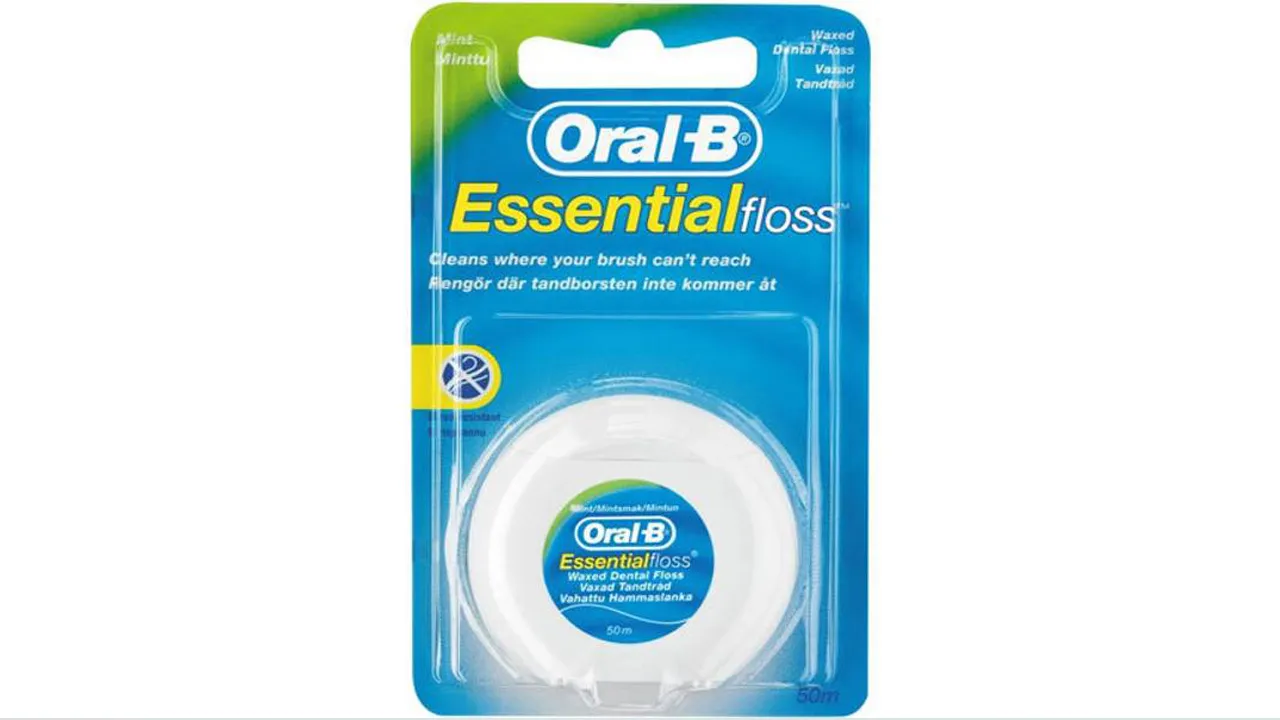
The next step is to gently insert the floss or tape between the teeth and slide it up and down, following the curve of each tooth. Use a gentle back-and-forth motion to clean the sides of the implant and the neighbouring tooth if flossing around the implant. Move the floss or tape to the next tooth and repeat the process after cleaning around the implant, ensuring thorough cleaning between each tooth and around each implant. The last step is to rinse the mouth thoroughly with water.
There are obstacles encountered if utilising implant-specific floss or unwaxed tape. These obstacles include difficulty in inserting floss and sensitivity or tenderness. Find it challenging to insert the floss or tape if the spaces between the teeth or around the implant are tight. Take time and be patient, gently guiding it between the teeth without forcing it. Flossing causes discomfort if there is sensitivity or tenderness around the implant or gums.
Using implant-specific floss or unwaxed tape offers several benefits, despite its obstacles. Daily flossing with implant-specific floss or unwaxed tape provides delicate and effective cleaning around a single dental implant. The thin and smooth design of these specialised flossing options permits thorough plaque and detritus removal, thereby reducing the risk of gum disease and implant-related complications. Implant-specific floss or unwaxed tape helps maintain gum health and protects the implant from harm or irritation by targeting difficult-to-reach areas.
The regular use of these specialised flosses promotes optimal oral hygiene. It ensures comprehensive plaque removal in conjunction with regular brushing with the best toothpaste for implants. Keep a single implant clean, promote periodontal health, and preserve the implant's long-term stability and functionality by incorporating implant-specific floss or unwaxed tape into everyday routine.
6. Use a mouthwash.
Making use of an oral irrigator as directed is an advantageous addition to the oral hygiene regimen, aside from using the best toothpaste for implants, particularly for the care of a single implant. The procedure entails selecting an oral irrigator recommended by the dentist or oral hygienist and following the manufacturer's setup and utilisation instructions. Modify the pressure settings to a liking after filling the water reservoir with warm water. Direct the water stream along the gum line, including the region around a single tooth implant, while holding the irrigator tip at a 90-degree angle to the teeth and gums. Cover all surfaces of the teeth while devoting sufficient time to each section. Rinsing the mouth with water afterwards removes any remaining detritus or solution.
Experience sensitivity or distress when using an oral irrigator, which is alleviated by adjusting the pressure settings or consulting the dentist. Finding the proper technique and angle for effective cleansing around the implant requires some practice. Surmount these obstacles and maximise the benefits of using an oral irrigator with practice and guidance.
There are numerous benefits to using an oral irrigator as directed. It improves plaque removal by dislodging and flushing away plaque and food detritus from hard-to-reach areas, decreasing the risk of gum disease and implant-related complications. The pulsating water stream massages and stimulates the gum tissues, promoting better gum health, reducing inflammation, and oral hygiene. Oral irrigators are convenient and easy to use, allowing one to maintain an oral hygiene routine at home. Customizable pressure settings ensure a comfortable and effective cleaning experience that is tailored to the user's requirements.
How Do I Take Care of Overdenture Implants?
The steps for you to take care of overdenture implants are listed below.
- Clean your dentures daily: Remove the overdenture and thoroughly sanitise it daily. Use a denture brush or soft-bristled toothbrush to clean all surfaces, including the underside, of the denture.
- Check O-rings, locator caps, and clips: Examine the O-rings, locator covers, and clips that connect the overdenture to the implants regularly.
- Tell your dentist about worn or missing teeth: Notify the dentist if there are any indicators of wear or if any of the O-rings, locator caps, or clips are missing or damaged. The dentists evaluate the situation and perform any necessary repairs or replacements to ensure that the overdenture fits and functions properly.
- Use a denture brush to delicately clean the underside of the denture: Use a denture brush to sanitise the underside of the denture. Pay close attention to the areas that touch the implants and gums. Remove any plaque, debris, or bacteria from these areas by meticulously but delicately cleaning them.
- Rinse your overdenture before inserting it: Thoroughly rinse the overdenture with water before reinserting it. Any residual cleansing agents are prevented from coming into contact with the mouth.
- Consult your dentist regarding the yearly replacement of the locator caps and O-rings: Consult a dentist frequently regarding an appropriate replacement schedule for locator covers and O-rings. The components deteriorate gradually, compromising the fit and stability of the overdenture. Keep its functionality and retention at their peak by replacing them annually or as directed by the dentist.
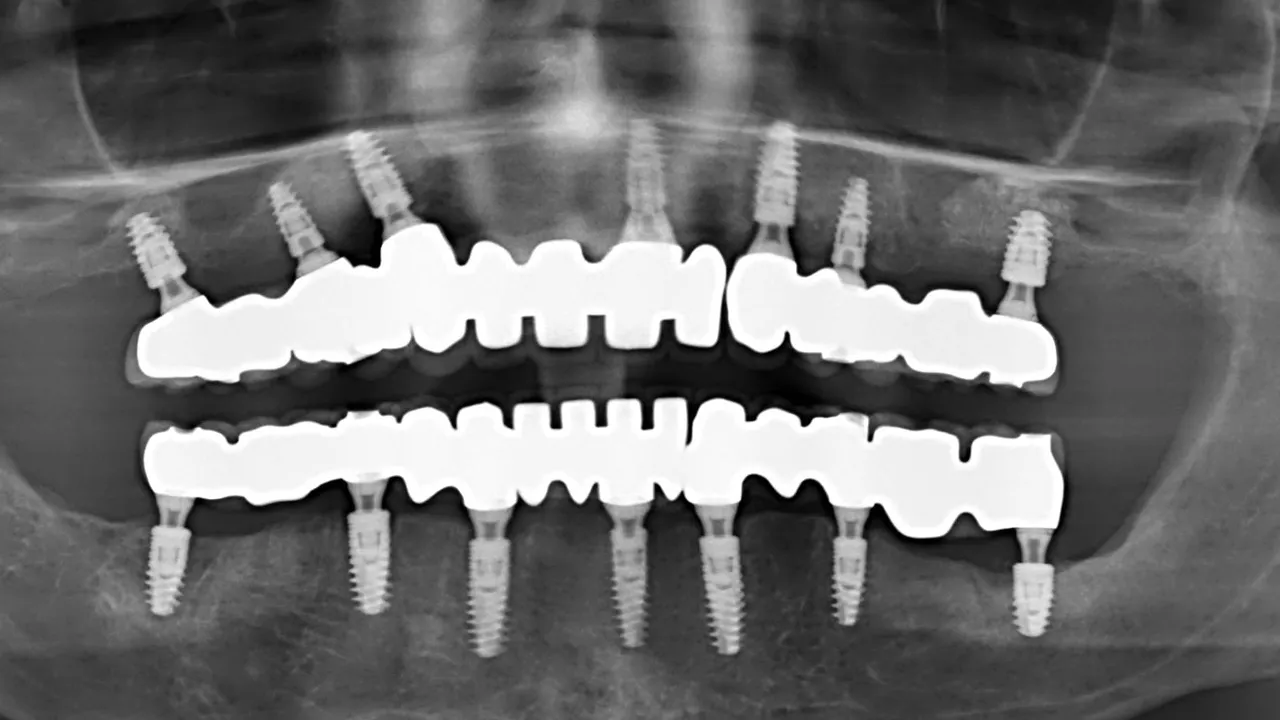
1. Clean your dentures daily.
Cleaning your dentures every day starts by detaching and immersing the dentures in a special water or liquid mixture. Denture care requires daily removal and soaking in a specialised cleansing solution. Start by removing the prostheses from the mouth with equal pressure on both sides. Select a mixture tailored for cleaning dentures suggested by the dental practitioner and comply with the packaging's instructions. Submerge the dentures completely in the cleansing solution, ensuring that the entire denture surface is covered. Allow the prostheses to soak for the time specified by the manufacturer.
Rinse the prostheses thoroughly under running water to eliminate any remaining cleaning fluid. Store the sanitised dentures in a container with clean water or a denture-soaking solution when not in use. There are obstacles to consider, such as allergic reactions to certain cleaning solutions or the risk of denture damage due to improper handling, the benefits of the daily regimen are substantial. Soaking dentures in a cleaning solution removes stains, bacteria, and debris effectively, promoting sanitation and hygiene.
The procedure contributes to fresher breath, improved oral health, and a reduced risk of gum disease by preventing plaque and tartar buildup. Regular submerging lengthens the life of the dentures by preventing discolouration, wear, and damage. Preserve the cleanliness, durability, and quality of the dentures by submerging them daily and following the instructions provided by the dentist and the manufacturer of the cleaning solution.
2. Check O-rings, locator caps and clips
Checking O-rings, locator caps, and clips that connect the overdenture to the implants regularly is essential for maintaining the overdenture implants. Carefully remove the overdenture from the mouth, taking precautions to avoid injury. Examine the O-rings, which are small rubber or silicone rings that provide the overdenture with stability and retention. Examine the item for signs of wear, such as cracks, tears, or deformation, and give close attention to any noticeable colour or texture changes.
Verify that the locator covers, which are attachments that fit onto the implants, are securely attached and functioning as intended. Examine the fasteners for wear, damage, or misalignment and ensure they engage properly. Locator covers, or clips, it is essential to notify the dentist immediately for further evaluation and any necessary repairs or replacements if any problems are discovered with the O-rings. There are obstacles to consider, such as limited visibility or difficulty in self-assessment, but the benefits of routinely evaluating these elements are substantial. Improve the chewing and speaking abilities, and comfort by assuring the stability and retention of the overdenture.
Early detection of any issues permits prompt intervention, thereby preventing complications and additional injury. Keeping the O-rings, locator covers, and clips healthy and functional contributes to the long-term success of the implant-supported overdenture. Ensure the stability, functionality, and longevity of the overdenture implants by actively participating in the examination process and promptly communicating any concerns with the dentist.
3. Tell your dentist about worn or missing teeth.
Telling your dentist about worn or missing teeth on overdenture implants. Examine the overdenture implants thoroughly to identify any issues. Examine the item for evidence of wear, such as cracks, tears, or deformations, and ensure that every component is present and securely attached. Make a note of them and schedule an appointment with the dentist If there are any issues. The dentist evaluates the condition of the components and recommends any repairs or replacements that are necessary during the dental appointment.
Maintaining the function and stability of the overdenture requires prompt replacement of worn or absent components. It protects the overdenture or implants from further harm, ensuring their long-term success. Preserve the integrity and longevity of the overdenture implants, allowing one to experience a confident smile and optimal oral function by collaborating closely with the dentist and addressing any issues promptly.
4. Use a denture brush to delicately clean the underside of the denture.
Use a denture brush to delicately cleanse the denture's exterior. Rinse the prostheses through running water to eliminate food particles and loose detritus. Using a denture brush or soft-bristled toothbrush, apply a small quantity of denture cleaner or mild soap, refraining from abrasive cleaners or toothpaste that scrapes the denture surface. Using delicate circular motions, clean the underside of the denture, paying special attention to the areas in contact with the gums and implants. Thoroughly but carefully sanitise every surface, ensuring that each debris is removed. Re-rinse the denture under running water to remove any cleansing product residue. Store the denture in a denture case containing clean water or a denture-soaking solution to prevent dehydration and warping.
There are significant benefits to cleansing the underside of the denture with a denture brush, even if there are obstacles to consider, such as the fragility of the denture and limited visibility. Debris and bacteria are removed by carefully cleaning the underside, fostering oral hygiene and preventing oral infections. Regular cleansing preserves the integrity and appearance of dentures by preventing the accumulation of stains, tartar, and plaque. A clean denture improves comfort and fit, permitting one to speak and consume with assurance. Improve oral hygiene, the durability of the dentures, and oral health by incorporating the cleansing procedure into daily routine.
5. Rinse your overdenture before inserting it.
Properly rinse your overdenture before inserting it in the mouth. Start by carefully removing the overdenture from its case or container. Place over a sink to collect any water or detritus that falls off the overdenture while rinsing. Hold the overdenture under running water and ensure that all surfaces, including the inner and outer portions, are thoroughly rinsed. Pay special attention to the areas that touch the gums and implants. Visually scrutinise it for any remaining debris or residue as rinsing the overdenture. Remove any detritus with a soft-bristled toothbrush or denture brush if necessary. Reinsert the overdenture into the mouth once satisfied with the state of hygiene.
There are significant benefits to correctly rinsing the overdenture with water, although there are obstacles to consider, such as the risk of dropping the overdenture or limited access to water in certain situations. Rinsing helps eliminate debris and cleaning solution residue, ensuring a clean and sanitary denture. It eliminates disagreeable flavours and odours, promoting oral freshness and comfort. Rinsing with water contributes to good oral hygiene by removing debris and residues, reducing the risk of oral infections, bad odour, and gum irritation. Ensure a clean and comfortable experience while wearing the overdenture, promoting oral health by incorporating simple action into the routine.
6. Consult your dentist regarding the yearly replacement of the locator caps and O-rings.
Consult your dentist regarding the annual replacement of the locator caps and O-rings to ensure the correct maintenance of overdenture implants. Start by scheduling an appointment with a dentist to discuss the replacement procedure. A dentist examines the condition of the locator covers and O-rings during the appointment, looking for signs of wear, deterioration, or damage. A dentist makes a recommendation for replacement based on their evaluation and explains the rationale behind it. They devise a treatment plan outlining the replacement procedure's steps, timeline, and cost.
Follow-up appointments are scheduled to remove and replace the old locator covers and O-rings as required. Preserve the functionality and stability of the dental implant overdentures, lengthen their lifespan, and avoid potential complications by consulting a dentist annually for replacement. There are obstacles encountered such as scheduling conflicts and financial considerations, but they are surmounted with clear communication and adaptability. Replacement of the locator covers and O-rings regularly ensures the continued success and health of overdenture implants, enhancing oral health and satisfaction.
What is a Dental Implant?
A dental implant is a form of restorative dentistry involving the surgical implantation of artificial tooth roots into the mandible. These titanium posts are designed to serve as anchors for dental remedies and to mimic the look and operation of inherent teeth. Dental implants deliver a stable foundation for dental prostheses including crowns, bridges, and dentures by integrating with the mandible through osseointegration.
Dental implants serve primarily to restore oral function by replacing absent teeth. A custom-made dental prosthesis is affixed to the implant to provide stability and enable normal biting, chewing, and speaking after the implant has fused with the mandible. It restores one’s ability to consume a diversity of foods and speak with assurance. Dental implants provide aesthetic benefits because the prosthetic is designed to merge seamlessly with the natural teeth, resulting in a natural-looking smile and preserving facial structure.
The major advantage of dental implants is that they deliver an enduring remedy for tooth substitution. Dental implants have to last a lifetime with appropriate attention and maintenance, eliminating the need for frequent replacements or adjustments. Implants, unlike alternatives such as dental bridges, do not rely on adjacent teeth for support, preserving the integrity of neighbouring teeth and promoting improved oral health over the long term.
Dental implants enhance oral health in addition to their functional and long-term benefits. Implant placement does not necessitate altering or influencing adjacent teeth, as opposed to dental bridges. It helps preserve the tooth's natural structure and reduces the likelihood of dental complications. Dental implants restore self-esteem by restoring a person's complete smile and enabling them to speak, eat, and interact without concern for missing teeth.
Consult a qualified dentist or oral surgeon to endure a thorough evaluation and develop a personalised treatment plan. They evaluate oral health, bone density, and suitability for dental implant placement for optimal results. Dental implants provide a dependable and long-lasting solution for tooth replacement, restoring oral function, enhancing aesthetics, and enhancing the quality of life overall.
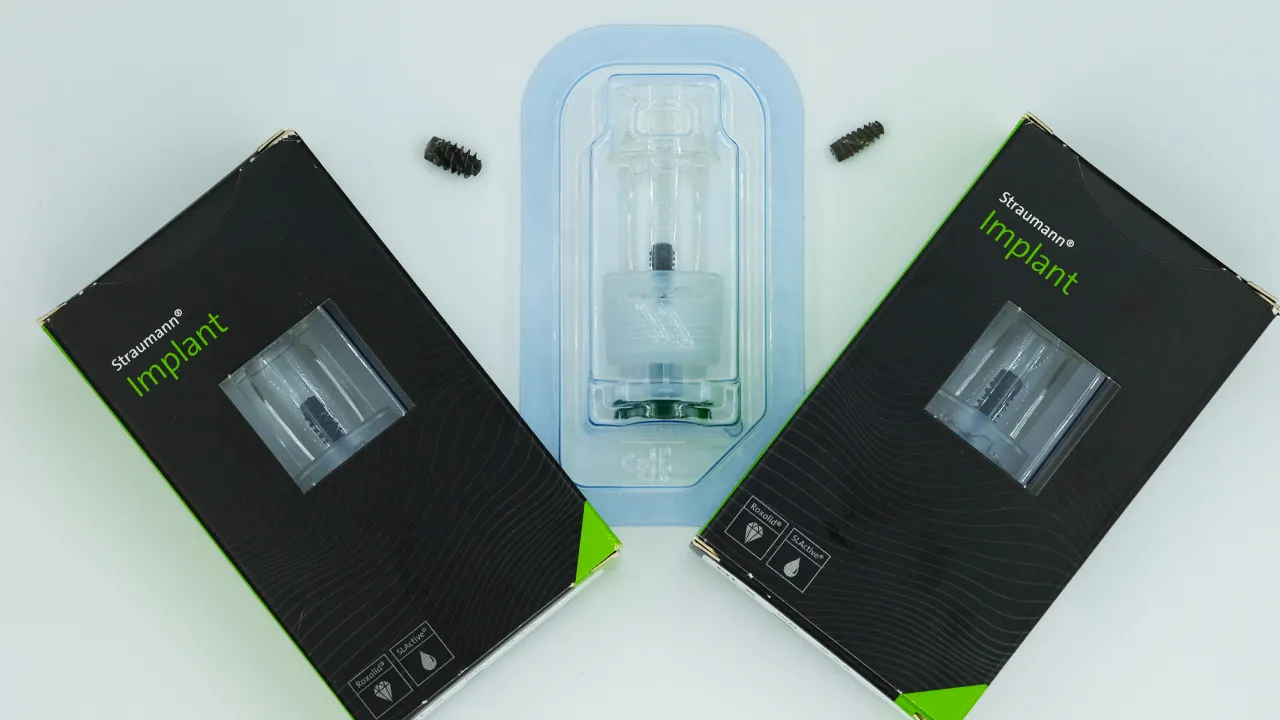
What to do before and after having dental implants?
The things an individual needs to do before and after dental implants include a consultation, oral hygiene, medication, diet, and follow-up appointments. Make an appointment to discuss the implant procedure with a qualified dentist or oral surgeon. Follow up with the dentist or surgeon as scheduled. For dental implant maintenance excellent oral hygiene by regularly brushing, flossing, and visiting the dentist for cleanings. Continue exercising good oral hygiene, paying special attention to the implant region with delicate techniques and specialised instruments.
Inform the dentist or surgeon of any medications or medical conditions that are currently taking or suffering from. Take prescribed medication as directed If the dentist prescribes medications, including painkillers and antibiotics. It helps in the patient’s aftercare for recovery of dental implants. Adhere to any dietary instructions provided by the dentist or surgeon before the implant surgery. Follow a diet of soft foods initially, reintroducing solid foods progressively as directed by the dentist. Attend every pre- and post-operative appointment as instructed by the dentist or surgeon. Attend the scheduled follow-up appointments to monitor the healing process, assess implant stability, and ensure overall oral health and implant placement success.
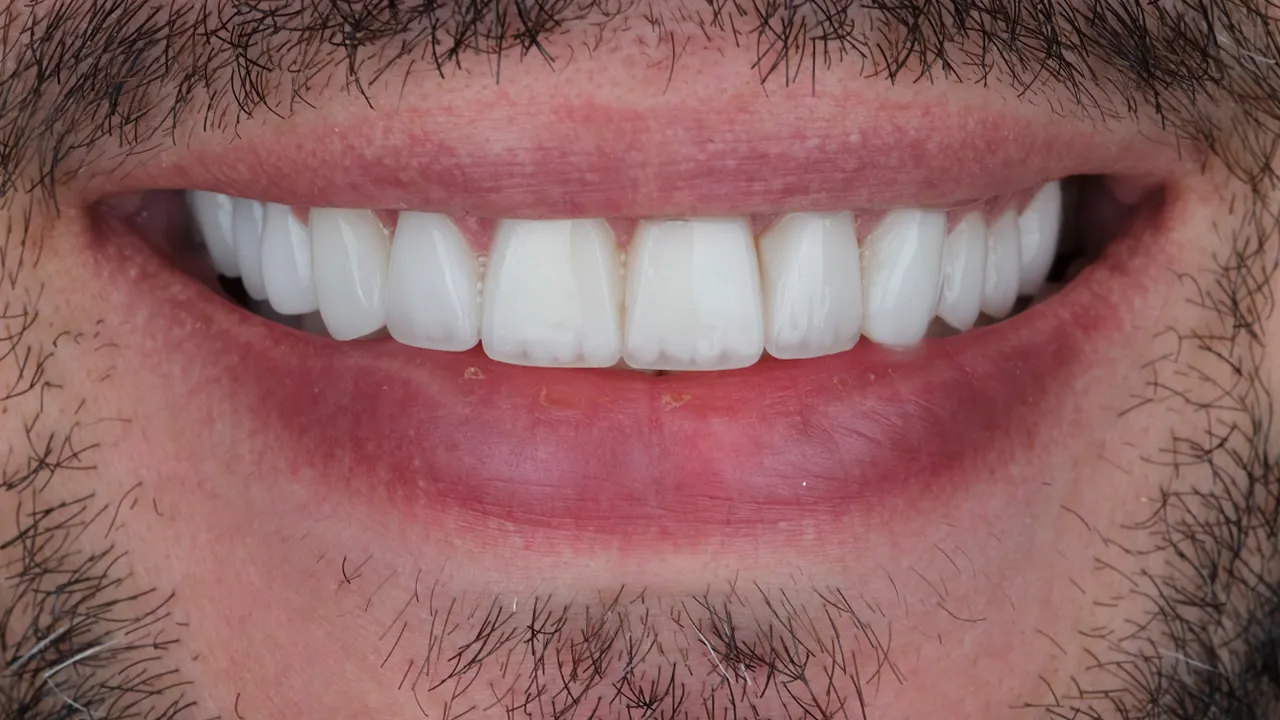
How to remove plaque from dental implants?
The steps on how to remove plaque from dental implants are listed below.
- Firstly, utilise a toothbrush with gentle bristles and lightly brush the teeth no less than twice a day. Pay close attention to the region around the dental prostheses, using small, circular movements while cleansing the implant surfaces. Plaque accumulation is eliminated and prevented through brushing.
- Secondly, use an interdental brush or dental floss created especially for dental devices to scrub between the teeth and implants. Cleanse the spaces between the teeth and implants with a back-and-forth stroke using an interdental brush or floss, removing plaque and detritus.
- Thirdly, rinse the mouth with an antibacterial mouth rinse, as suggested by the dentist. It helps to eliminate bacteria and reduce plaque build-up.
- Fourthly, a water flosser, known as an oral irrigator is used to sanitise dental implants. It utilises a water jet to remove plaque and detritus from difficult-to-reach areas. Consult a dentist to determine whether an oral irrigator is appropriate for the situation.
- Fifthly, schedule checkups and cleanings with a dentist or dental hygienist regularly. They sanitise the dental implants professionally, removing any plaque and tartar build-up that is difficult to remove at home.
- Lastly, follow expert guidance. The dentist recommends additional products or techniques for plaque removal, depending on specific requirements. It is essential to adhere to their instructions and recommendations for optimal oral hygiene and plaque control.
How long do dental implants need to soak?
Dental implants need to be soaked within a few minutes. Dental implants are essential to adhere to the specific instructions provided by the dentist or the cleansing solution packaging. It ensures that the components are effectively cleaned and disinfected while maintaining their integrity. Dental implants do not need to be soaked for an extended period. It is more common to soak the implant-supported denture's components, such as the denture, or any removable attachments, such as locator caps or O-rings. The amount of time that dental implants need to soak varies based on some aspects, including the particular type of implant and the manufacturer's instructions. Dental implants usually need to be soaked in a sterilising solution for a few minutes to several hours.
The implants must be completely cleansed and sterilised throughout the procedure for the patient to receive them. Reducing the chance of infection and encouraging good integration with the surrounding bone tissue, the solution helps eliminate any impurities or debris that have settled on the implant surface. The soaking time is a crucial stage in the intensive sterilisation measures that dentists and oral surgeons follow to maintain the highest levels of safety and hygiene throughout dental implant procedures. Patients must adhere to their dentist's advice about implant preparation and care to maximise results and reduce the risk of complications.
How often should Dentures be cleaned?
Dentures should be cleaned at least once a day, preferably after meals, to help get rid of bacteria, food debris, and plaque that builds up during the day. Dentures must be cleansed regularly to preserve their cleanliness, appearance, and oral health. Employ a denture brush or a toothbrush with delicate bristles made particularly for cleaning prostheses. Using a mild soap or denture solvent recommended by a dentist, softly brush all surfaces of the dentures, such as the teeth, gums, and any attachments. It is abrasive and causes damage to the denture material when using conventional toothpaste.
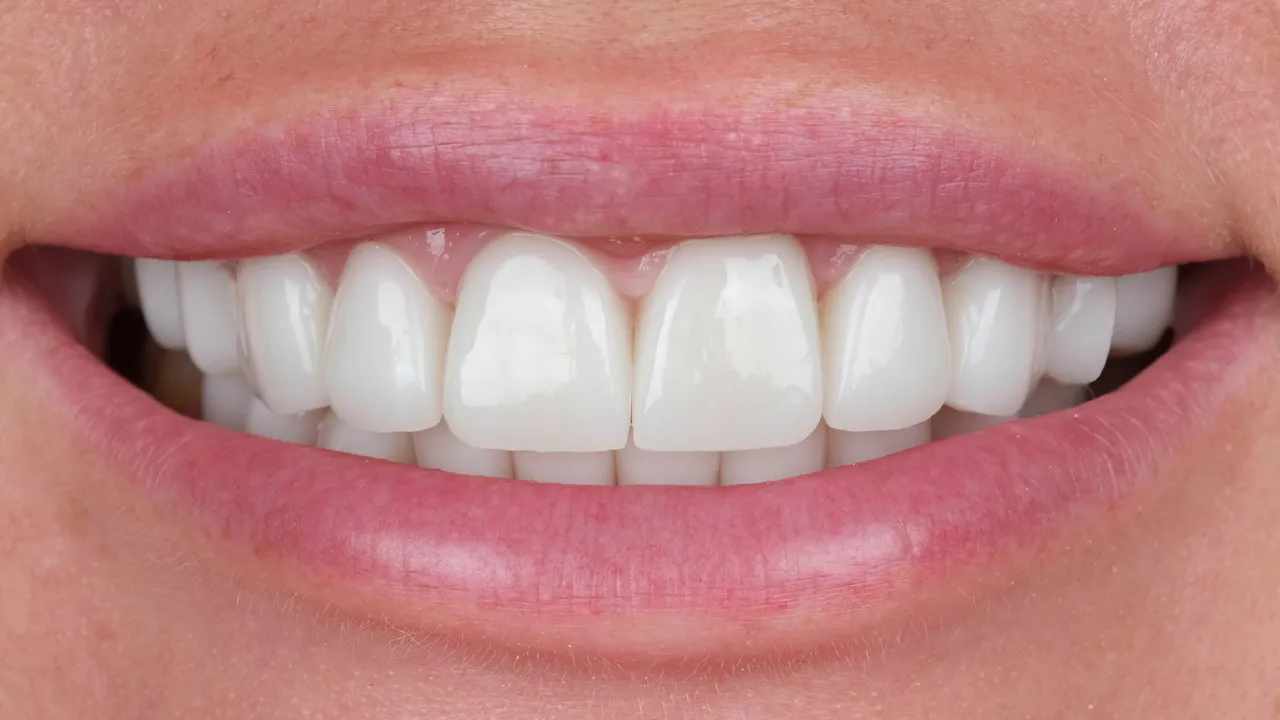
Daily cleaning of dentures is necessary to preserve dental health and stop the growth of bacteria and plaque. Denture cleaning must be done at least twice a day, usually right before bed. The daily cleaning method helps eliminate food particles, stains, and bacteria that build up on the denture surface throughout the day. The dentures must be taken out of the mouth and cleaned properly using a soft-bristled toothbrush, mild denture cleaner, and light soap.
Abrasive cleansers and toothpaste must be avoided because they are harmful to the denture material. Dentures must be completely rinsed with water after cleaning to get rid of any residual material. Wearers of dentures maintain oral hygiene by using a soft toothbrush or gauze to clean the tongue, gums, and roof of their mouth. Maintaining teeth's basic health and extending the life of dentures is achieved by carefully following the cleaning procedures.
What are the tools needed when cleaning dentures?
The tools needed when cleaning dentures are listed below.
- Soft-bristled Denture Brush. A soft-bristled brush crafted particularly for dental prostheses gets rid of food residues, dirt, and germs without scratching or damaging the denture material.
- Denture Cleaner. Dentures need to be disinfected and stains that are difficult to remove with specialised denture cleaning solutions or tablets. The cleaners must be used by the manufacturer's recommendations and frequently come in tablet or liquid form.
- Denture Toothpaste. Denture toothpaste is designed to gently clean denture surfaces without the use of abrasive components that lead to scratches or material deterioration, in contrast to conventional toothpaste. It keeps the dentures looking nice while helping in the removal of bacteria and plaque.
- Denture Cup. A denture cup or container offers a secure and clean way to store dentures when not in use. It aids in preventing contamination or harm from exposure to outside elements.
- Towel. Dentures must be handled with a clean towel or soft cloth to avoid drops or damage when cleaning. It offers a surface for denture drying following washing.
- Water. Rinsing dentures with water before and after brushing is crucial to get rid of any loose particles and cleaning solution. Using cool or lukewarm water is crucial because hot water causes the denture to twist or change shape.
- Denture Adhesive Remover (if applicable). A denture adhesive remover is required for people who use denture glue to increase denture retention to thoroughly clean any remaining adhesive from the gums and denture surfaces.
1. Soft-Bristled Denture Brush
A soft-bristled denture brush is a specialised dental hygiene device used to clean dentures. It has delicate, pliant bristles that thoroughly cleanse without compromising the denture structure. Normal toothbrushes have stiffer bristles that tend to scratch or damage denture surfaces. The capacity of a soft-bristled denture brush to eliminate food residues, plaque, and microorganisms from the denture surface without sacrificing its integrity makes it an essential tool.
The delicate bristles of the brush help scrape off dirt and stains from dentures, guaranteeing a complete cleaning while lowering the danger of denture abrasion or damage. People keep their prostheses clean and hygienic, boosting oral health and averting constraints, such as bad breath or mouth infections, by using a denture cleaner and a gentle bristled brush. The soft-bristled denture brush is a vital tool for correct denture care and maintenance, allowing for excellent cleaning while protecting the dental prosthetic's longevity and functioning.
2. Denture Cleaner
A denture cleaner is a solution or tablet created especially to sanitise dentures. It has components that aid with stain removal, germ removal, and disinfection of the denture surface. Denture cleaners are vital because they offer comprehensive and efficient cleaning procedures that frequent brushing does not provide. Inadequate cleaning of dentures results in the buildup of germs, food residues, and plaque, which cause gum inflammation and other oral health problems, such as foul breath. Denture cleanser addresses such problems by breaking down and eliminating persistent stains, destroying harmful germs, and leaving denture surfaces fresh and hygienic.
Denture cleaner is often diluted in water according to the manufacturer's directions before being soaked in the solution for a specific time. It makes a way for the cleaner to enter the area and release stains and debris, which makes brushing them easier. Certain denture cleaners are available as tablets that need to be dissolved in water to produce a cleaning solution. A soft-bristled denture brush is employed to further eliminate any foreign material and guarantee a complete cleaning of the dentures after soaking. Denture cleaners are vital for keeping a clean set of dentures that is visually pleasing and operational.
3. Denture Toothpaste
Denture toothpaste is a type of toothpaste designed especially for cleaning dentures. It is developed to safely and thoroughly clean prostheses, compared to conventional toothpaste, which comprises abrasive components that harm denture materials. The benefits of using denture toothpaste include the ability to eliminate bacteria, food particles, and plaque from the surface of dentures. It promotes good oral hygiene and averts oral health problems, including gum inflammation and foul breath. Mild abrasives and antibacterial ingredients found in denture toothpaste frequently aid in the removal of tough stains and the destruction of dangerous microorganisms.
Denture toothpaste is used on a soft-bristled denture brush, and the dentures are then gently washed to get rid of dirt and stains. There are a lot of best toothpaste for implants in the market. A complete cleaning procedure is ensured, which aids in loosening particles without causing scratches or other damage to the denture surface. The dentures are cleaned and revitalised by rinsing them with water after brushing to get rid of any leftover toothpaste residue. It is the key factor for good denture care and maintenance, as it promotes oral health and ensures the longevity and functionality of the dental prosthesis.
4. Denture Cup
A denture cup is a container made particularly for storing dentures when they are not being used. It usually has a tight top and a compartment that suits the shape of the dentures to keep them safe and clean from injury or contamination. The capacity of a denture cup to preserve the integrity and cleanliness of dentures while they are not in use makes it essential. Dentures kept in a denture cup are shielded from outside influences that deteriorate or distort the dental prosthesis. Placing dentures in a specific container lowers the risk of misplacement or inadvertent damage, maintaining their safety and quality.
Dentures that are fully cleaned and rinsed must be stored appropriately. Dentures are placed in the denture cup, which has a tightly closed top to keep dust, bacteria, and other contaminants out. Sustaining the denture material's shape and averting warping or distortion is another benefit of storing it properly in a denture cup. A denture cup is a vital item for denture users, giving a handy and sanitary way to store and protect their dental prosthesis when not in use.
5. Towel
A towel is an absorbent fabric that is commonly used for drying or wiping. A towel has several essential uses when it comes to cleaning dentures. It reduces the chance of unintentional drops or damage by offering a sanitised and cushioned surface for handling dentures throughout the cleaning procedure. Using a towel as a cushioning surface helps shield dentures, which are fragile dental prosthetics, from impact and abrasion. A towel is used to dry dentures once they are washed.
Dentures must be completely dried out because excess moisture triggers the growth of bacteria and makes them uncomfortable to wear. Dentures are maintained completely dry before being stored or used by gently rubbing or wiping them with a cloth to absorb moisture. Towels are essential for safe handling, efficient drying, and upholding a hygienic environment during the cleaning process, that's why they are of such significance for denture care and maintenance.
6. Water
Water is a chemical substance made up of hydrogen and oxygen molecules that is clear, tasteless, and odourless. Water is essential for maintaining dental health and making sure that the sterilisation procedure is efficient when it comes to denture cleaning. Its significance comes from its ability to function as a solvent, helping to get rid of dirt, plaque, and cleaning chemicals from the surface of the denture. Water is mostly utilised for pre- and post-cleaning rinses when washing dentures. Dentures must be thoroughly cleaned by soaking them with water. Water is combined with toothpaste or denture cleaner during cleaning to make a solution that is useful to rinse the brush or soak the dentures.
Plaque and stains that are difficult to take off the denture surface are easily dissolved with the use of such a solution. Dentures are made clean and free from potential irritants by rinsing them with water after cleaning to help get rid of any residue or cleaning agents that have remained. Dentures are soaked in water in a denture cup or container to keep them moist and fresh during storage. Water is an important part of the denture cleaning routine because it allows for proper cleaning, rinsing, and storing, which contribute to oral hygiene and the longevity of dental prostheses.
7. Denture Adhesive Remover (if applicable)
Denture adhesive removers are designed to break and eliminate denture glue from the gums and tissues surrounding the denture. One of its primary functions is to dissipate the sticky residue that denture adhesives leave behind, guaranteeing complete cleansing and advancing oral hygiene. Denture adhesive remover is crucial for eliminating traces of adhesive that normal brushing alone does not work. Excessive adhesive buildup is irritating and traps food residues and microorganisms, which foster gum inflammation or infection.
Denture adhesive remover is usually applied to a soft cloth or cotton swab and carefully rubbed onto gum tissues and denture bases, areas where adhesive residue is present when cleaning dentures. The remover dissolves the adhesive, making it simpler to wipe off with a cloth or swab. Wipe the dentures using denture cleanser and a delicate brush to guarantee that any leftover residue is thoroughly removed. People better manage the comfort and cleanliness of their dentures while encouraging the best oral health and overall wellness by adding it to their cleaning regimen.
What are the best to use cleaners for dentures?
The best-to-use cleaners for dentures are listed below.
- Polident 3 Minute Denture Cleanser (Best Overall): Polident 3 Minute Denture Cleanser is the best denture cleaner that is well-liked and efficient in delivering a deep clean in just three minutes. Using Polident leaves the dentures fresh and clean because it eliminates discolourations, plaque, and germs. Denture parts are cleaned with it daily without harming them.
- Poligrip Denture Cleanser Tablets: An efficient and convenient solution for sanitising dentures is using Poligrip Denture Cleanser Tablets and water. The tablets are among the best denture cleaners that aid in removing plaque and germs causing odours, and discolourations, leaving prostheses radiant and spotless.
- Efferdent Denture Cleanser: The product, Efferdent Denture Cleanser, is another well-known and reliable product for cleaning dentures. Effervescent solid action eliminates discolourations, germs, and plaque from dentures. It has a reputation for cleaning difficult-to-reach places and leaving dentures feeling clean. Partial dentures are cleaned effectively with Efferdent
 .
.
Does cleaning dentures make them last longer?
Yes, cleaning dentures makes them last longer. Cleansing dental prostheses aids in reducing microorganisms, food residues, and plaque streaks that accumulate on their surfaces. Reduce the risk of gum disease, bad breath, and infections, fostering the health of gums and oral tissues by keeping dentures clean. Proper cleansing averts the accumulation of streaks and discolouration on the denture surfaces, preserving their aesthetic appeal.
Regular cleaning helps stop denture injury by employing gentle brushing techniques and refraining from abrasive materials. It helps preserve the denture's structural integrity and reduces the need for untimely replacement. Keeping prostheses clean ensures a proper fit, which improves comfort and functionality and prevents irritation or injury to the gums or oral tissues. Regular cleansing keeps dentures clean and hygienic, in addition to eliminating odour-causing bacteria.
Do implants need to be maintained?
Yes, implants need to be maintained. Maintenance is required to guarantee the enduring efficacy and functionality of dental prostheses. Dental implants are crafted to be durable and permanent, they demand adequate attention and upkeep to remain healthy and functional. Good oral hygiene is vital for implant management, particularly cleansing teeth with a delicate toothbrush no less than twice per day and using dental floss or interdental brushes to clean between the implants and natural teeth.
Routine dental assessments are crucial in addition to monitoring the status of the implants and performing professional cleanings. Utilising implant-specific cleaning tools and avoiding routines such as biting on hard objects or using teeth as tools are necessary. A healthy lifestyle, including a balanced diet and the cessation of smoking, contributes to the strength of dental implants. Adhere to the dentist's recommendations for the upkeep and care of dental prostheses. Guarantee the enduring efficacy and functionality of dental implants by adhering to such maintenance methods and working closely with the dentist.
What are the best professional dental implant maintenance services?
The best professional dental implant maintenance services are listed below.
- Oral Hygiene Education: Patients with dental implants receive individualised guidance from dental experts regarding oral hygiene, with a focus on the value of brushing and flossing correctly and employing oral irrigators or interdental brushes to clean the areas surrounding implant-supported restorations. Patients get oral hygiene education regarding the potential hazards associated with implants and the worth of practising proper dental hygiene.
- Routine Dental Checkups: Regular dental examinations allow dentists to monitor the general health of dental implants, the state of the surrounding gum tissues, and early detection of any indicators of implant difficulties. Dentists keep an eye on the health and stability of implants by doing routine dental checkups and diagnostic procedures, such as X-rays. It shows how the clinic gives importance to its dental implant service.
- Expert Cleaning Services: Professional cleanings by dental hygienists are required to remove plaque, tartar, and germs from areas around dental implants that are difficult to access with routine brushing and flossing. One way to completely clean implant surfaces and stop gum inflammation or peri-implantitis is to utilise scaling and root planing procedures. Professional cleanings by dental hygienists are required to remove plaque, tartar, and germs from areas around dental implants that are difficult to access with routine brushing and flossing. One way to completely clean implant surfaces and stop gum inflammation or peri-implantitis is to maximise the expert cleaning services.
- Maintenance of Implant Restorations: Regular evaluation and maintenance of implant-supported restorations, including dental crowns, bridges, and overdentures, are required to ensure adequate fit, function, and aesthetics. Dentists repair or replace worn or damaged, and maintenance of implant restorations to improve chewing ability and prevent issues.
- Occlusal Assessments and Bite Adjustments: Implant failure or problems result from placing excessive stresses on implants and surrounding tissues, which are avoided by ensuring proper alignment and occlusion of restorations supported by implants. Dental practitioners make occlusal assessments and bite adjustments to guarantee normal chewing forces and lower the chance of implant-related problems.
- Management of Peri-Implantitis: Patients who exhibit symptoms of infection and inflammation surrounding dental implants, or peri-implantitis, require professional care. Treatment or management of peri-implantitis needs surgical intervention, antimicrobial therapy, laser therapy, or expert deep cleaning to treat infection and maintain the strength of the implant and surrounding tissues.





